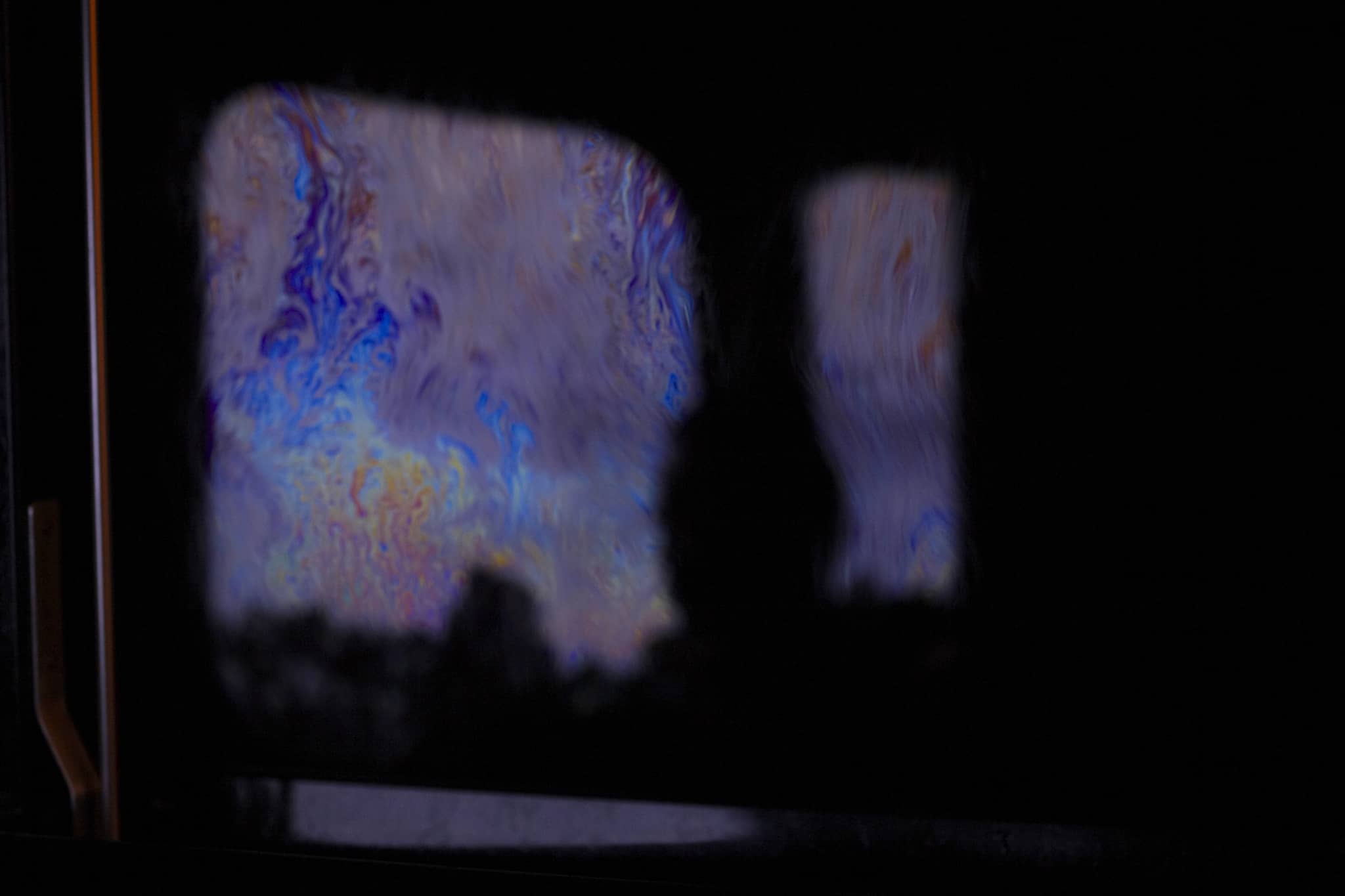
Scroll for English
As Razões de um Deslumbramento
O trabalho de Feco Hamburger renova a problemática do suporte da imagem: como melhor interrogá-la? Ele criou uma máquina que se parece com uma guilhotina e que permite fabricar uma bolha de sabão durável por um instante. É o olhador que pode manipular essa máquina. Quando se faz a bolha, projeta-se uma imagem, formada ou deformada – diriam os que não entendem nada de imagem – pela reunião do feixe luminoso e da bolha antes de estourar.
Como melhor significar a fragilidade de toda imagem que depende da reunião improvável de uma projeção luminosa, de um suporte, de um olhador, mas também do criador e do fabricante da imagem, nesse caso o artista? Qual imagem seria melhor que o aspecto efêmero da imagem e da vida em geral? Qual distinção fazer com os fluxos de imagens que a internet e a televisão despejam de modo ininterrupto, a ponto de nos embriagar com esse fluxo ? Aqui, a imagem pode ser contemplada não pela eternidade, mas com uma duração que ninguém conhece: há, então, urgência de ver. E esse ver é dado em um fazer: o que poderia ser mais maravilhoso do que essa fonte de poesia? Poesia estranha, se a gente pensa que a máquina parece dar a luz a imagem e ao mesmo tempo matá-la.
Guilhotina icônica que simboliza o tempo que passa e nos obriga a lembrar que a maioria das imagens tem como vocação a perda e o desaparecimento. Um pouco como os pintores de Lascaux, que, claro, nos deixam ver os restos de uma cerimônia pictural, mas certamente de outra ordem, e sobretudo, que nos lembram que milhões de imagens devem ter sido feitas há dez mil anos e que não restou nada delas. Para sempre. Confronto com o nada e a aniquilação, que é o destino obrigatório de toda imagem quando se olha o mundo na escala do Universo, mesmo sendo digital.
Vaidade das imagens? Talvez. Ou, ao contrário, e correlativamente, convite a olhá-las intensamente, pois tudo passa. A imagem é do passado aparentemente conservado no nosso presente, mas que, irremediavelmente, sem cura, voltará ao passado. Se morrer é porque está viva. Morte e vida das imagens, como dizia o outro.
in Geração 00, A Nova Fotografia Brasileira, Org. Eder Chiodetto, São Paulo, Edições Sesc São Paulo, 2013
Reasons for a Fascination
We are really impressed with Feco Hamburger’s work, which renews the issue of image support: what is the best way to interrogate the image? He created a machine that looks like a guillotine and that allows the manufacturing of a durable soap bubble, instantaneously of course. It is the viewer that can handle this machine. When the bubble is made. an image is projected, formed or deformed, – as those who know anything about images would say – through the merging of the light beam and the bubble before bursting.
What is the best way to signify the fragility of every picture that depends on the unlikely merging of light projection, a support, a viewer, but also of the creator and manufacturer of the image, in this case the artist? What would be the best image of the ephemeral aspect of the image and of life in general? What distinction should be made regarding the flow of pictures that the internet and the TV continuously pour on us, which almost get us drunk with the flow? Here, the image can be contemplated, not for eternity, but for a moment that nobody knows how to define: thus there is urgency to see. And this seeing is transformed into making: what could be more wonderful than this fountain of poetry? Strange Poetry if we understand that the machine seems to gibe birth to the image and at the same time kill it.
An iconic guillotine that symbolizes time passing and forces us to remember that the vocation of most images is loss and disappearance. A bit like Lascaux’s cave painters that, of course, let us see the remains of a pictorial ceremony, but certainly of a different order, especially reminding uds that millions of images must have been made 10,000 years ago and that there is nothing left of them. Forever. Confrontation to nothingness and annihilation, which is the binding fate of every image, when you look at the world in a universe scale, even digital ones.
Vanity of images? Maybe. Or, rather and correspondingly, an invitation to look at them intensely because everything passes. The image is from a past apparently preserved in our present, but not that, hopelessly, incurably, returns to the past. If it dies, it is because it is alive. Death and life of images, as one said.
in Geração 00, A Nova Fotografia Brasileira, Org. Eder Chiodetto, São Paulo, Edições Sesc São Paulo, 2013